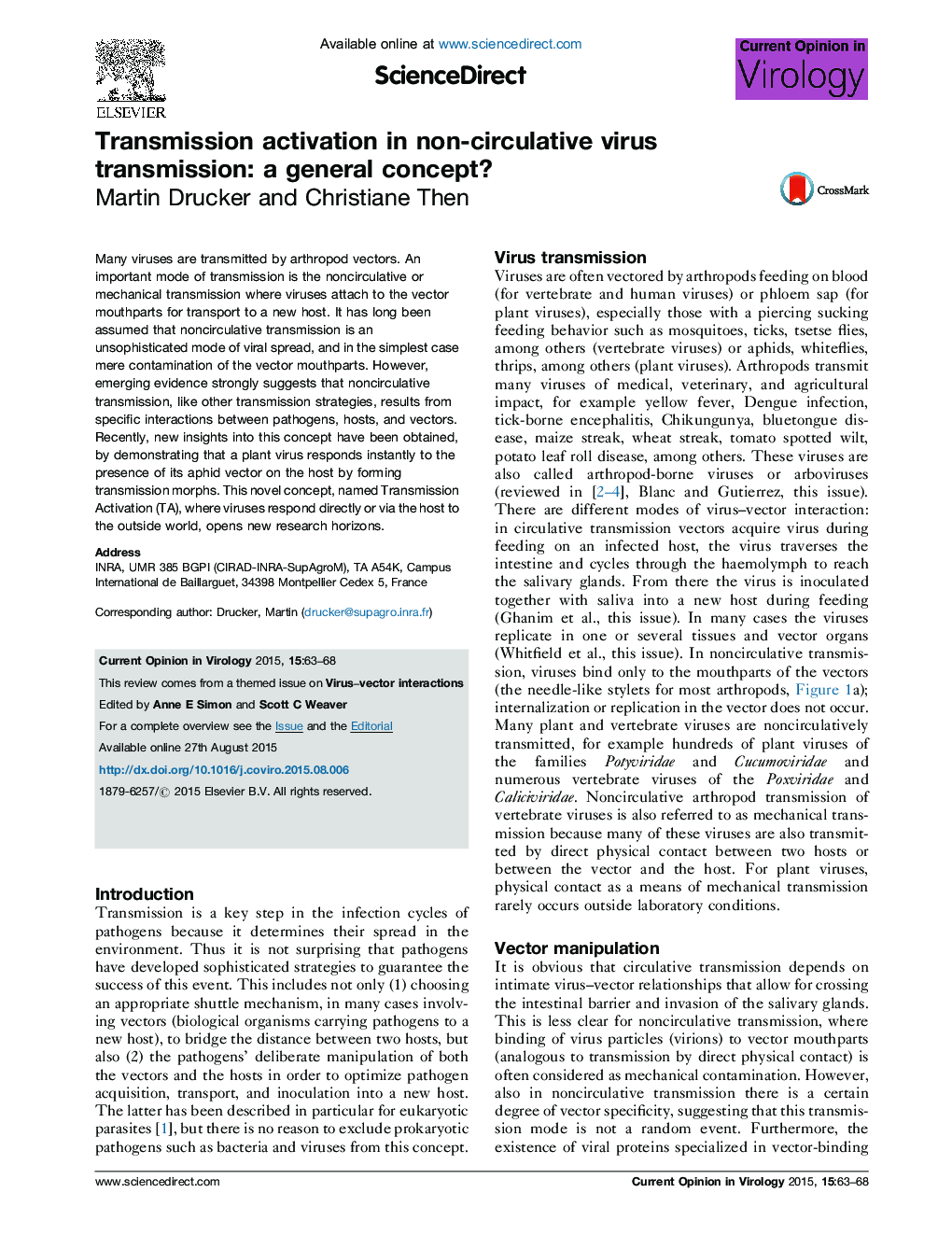| Article ID | Journal | Published Year | Pages | File Type |
|---|---|---|---|---|
| 2473200 | Current Opinion in Virology | 2015 | 6 Pages |
•Noncirculative transmission is often more than mere contamination of the vector.•Viruses may ‘sense’ presence of the vector on a host and initiate transmission.•Hosts play an important role in virus transmission.
Many viruses are transmitted by arthropod vectors. An important mode of transmission is the noncirculative or mechanical transmission where viruses attach to the vector mouthparts for transport to a new host. It has long been assumed that noncirculative transmission is an unsophisticated mode of viral spread, and in the simplest case mere contamination of the vector mouthparts. However, emerging evidence strongly suggests that noncirculative transmission, like other transmission strategies, results from specific interactions between pathogens, hosts, and vectors. Recently, new insights into this concept have been obtained, by demonstrating that a plant virus responds instantly to the presence of its aphid vector on the host by forming transmission morphs. This novel concept, named Transmission Activation (TA), where viruses respond directly or via the host to the outside world, opens new research horizons.
